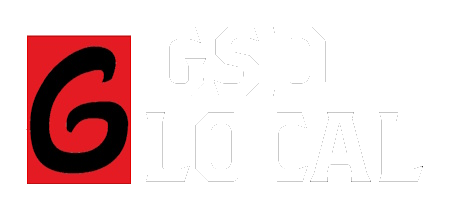The Essential Signs for a Website Revamp: A Comprehensive Guide

Recognizing Signs
In today's fast-paced digital world, recognizing the signs that indicate the need for a website revamp is crucial for businesses striving to stay competitive. As technology and consumer preferences evolve, websites must adapt to meet the changing demands of users. A website renewal is essential to ensure that the online presence remains engaging, relevant, and effective in achieving business goals.
The digital landscape is dynamic, and businesses need to continuously assess their websites for signs that it may be time for a revamp. Whether it's outdated design elements, slow loading times, or a lack of mobile responsiveness, these indicators can significantly impact user experience and ultimately affect a company's competitiveness.
By staying vigilant and recognizing these signs early on, businesses can proactively address potential issues and maintain an impactful online presence. Embracing the need for a website revamp demonstrates a commitment to meeting customer expectations and remaining at the forefront of industry standards.
Benefits of Revamp
Enhanced User Experience
Enhancing the user experience is a primary advantage of undertaking a website revamp. By updating the design, layout, and functionality of the website, businesses can ensure that visitors have a seamless and enjoyable interaction. An improved user experience leads to higher engagement, lower bounce rates, and increased conversion rates.
When users find it easy to navigate through a website, locate information effortlessly, and enjoy visually appealing content, they are more likely to stay longer on the site. This not only enhances the overall perception of the brand but also increases the likelihood of visitors returning in the future.
A revamped website with enhanced user experience demonstrates a business's commitment to providing value to its audience. It reflects positively on the brand's professionalism and dedication to meeting customer needs effectively.
Improved Search Engine Rankings
One of the significant benefits of a website revamp is its potential impact on search engine rankings. Search engines favor websites that are well-designed, mobile-friendly, and offer valuable content to users. By revamping a website with updated design elements and SEO best practices, businesses can improve their visibility in search results.
A revamped website is more likely to rank higher for relevant keywords and phrases, thereby attracting more organic traffic. Additionally, search engines prioritize websites that provide an optimal user experience, which aligns with the goals of a comprehensive website renovation.
Improving search engine rankings through a revamp can significantly enhance online visibility and drive more qualified traffic to the website. This increased exposure can ultimately lead to higher conversion rates and improved business outcomes.
Revamp Importance
Staying Competitive
In the ever-evolving digital landscape, the importance of a website revamp cannot be overstated when it comes to staying competitive. With technological advancements and shifting consumer behaviors, businesses must continuously adapt to meet the changing demands of their audience. A website renewal plays a pivotal role in ensuring that a company's online presence remains relevant, engaging, and aligned with industry best practices.
By revamping their websites, businesses can demonstrate their commitment to providing an up-to-date and user-centric experience. This proactive approach showcases a willingness to evolve alongside market trends and sets them apart from competitors who may lag behind in terms of online presence.
Moreover, an updated website with modern design elements and enhanced functionality can significantly impact how a brand is perceived by its audience. It reflects an image of innovation, responsiveness, and attentiveness to customer needs – qualities that are highly valued in today's competitive business environment.
Enhancing Brand Image
A website revamp presents an invaluable opportunity for businesses to enhance their brand image and credibility. An outdated or poorly functioning website can inadvertently convey a negative impression of the brand, leading potential customers to question the professionalism and reliability of the business.
Through a strategic website renewal, companies can align their online presence with their brand identity, values, and messaging. This alignment fosters trust and confidence among visitors, reinforcing the brand's position as an industry leader committed to delivering exceptional experiences.
Furthermore, an aesthetically pleasing and seamlessly functional website contributes to shaping positive perceptions about the brand. It serves as a visual representation of the company's dedication to quality, attention to detail, and overall commitment to excellence.
Overall, a well-executed website revamp not only ensures competitiveness but also elevates the brand's image in the eyes of both existing customers and potential prospects.
Cost Factors
When considering a website revamp, businesses must carefully assess the budgetary implications to ensure a successful and cost-effective transformation. Here are some key factors to consider when budgeting for a website revamp:
Budget Considerations
Scope of Revamp: The extent of the changes required, such as design overhaul, content restructuring, or technical updates, will significantly impact the overall cost. Understanding the scope of the revamp is crucial in estimating the financial resources needed.
Resource Allocation: Businesses need to allocate resources not only for the initial revamp but also for ongoing maintenance and potential future updates. It's essential to consider long-term resource allocation to sustain the revamped website's effectiveness.
Professional Services: Depending on the complexity of the revamp, businesses may need to enlist professional services such as web designers, developers, or content strategists. Evaluating these service costs is critical in creating an accurate budget.
Technology Investments: Upgrading backend systems, implementing new integrations, or enhancing security measures may require additional technology investments. These technological aspects should be factored into the overall budget considerations.
Testing and Quality Assurance: Allocating resources for thorough testing and quality assurance processes is essential to ensure that the revamped website functions seamlessly across various devices and platforms. Ignoring this aspect can lead to unexpected expenses post-revamp.
ROI of Revamp
Understanding the return on investment (ROI) of a website revamp is instrumental in justifying the associated costs and evaluating its long-term benefits. Key considerations for assessing the ROI of a website revamp include:
Improved Metrics: A successful website revamp often leads to improved metrics such as increased traffic, higher engagement rates, reduced bounce rates, and ultimately improved conversion rates. Analyzing these metrics helps in quantifying the impact of the revamp on business outcomes.
Competitive Advantage: A revamped website can contribute to gaining a competitive edge by enhancing brand perception and user experience. Assessing how this advantage translates into tangible business benefits is crucial in determining ROI.
Long-Term Viability: Evaluating how a website revamp aligns with long-term business goals and market trends provides insights into its potential long-term ROI. A well-executed revamp can future-proof a company's online presence and contribute to sustained growth over time.
Key Elements
Effective Design
When undertaking a website revamp, the significance of effective design cannot be overstated. A visually appealing and user-friendly design is essential for capturing visitors' attention and fostering a positive user experience. The design elements of a website, including layout, color scheme, typography, and imagery, play a crucial role in conveying the brand's identity and engaging the audience.
An effective design aligns with the overall brand aesthetic while also incorporating modern trends to ensure relevance and appeal. It should prioritize ease of navigation, intuitive user interfaces, and responsive layouts that adapt seamlessly to various devices. By optimizing the visual aspects of the website, businesses can create a compelling online presence that resonates with their target audience.
Furthermore, an updated design can instill confidence in visitors by conveying professionalism and attention to detail. It reflects positively on the brand's dedication to delivering high-quality experiences and sets the stage for meaningful interactions with potential customers.
Incorporating best practices in web design such as clear calls-to-action, streamlined navigation paths, and visually engaging content can significantly enhance user engagement and drive desired actions on the website. Ultimately, effective design serves as a foundational element in creating an impactful and memorable online presence that supports business objectives.
Content Strategy
A successful website revamp goes beyond visual aesthetics; it also encompasses a strategic approach to content. Content strategy plays a pivotal role in ensuring that the revamped website effectively communicates the brand's message, values, products or services, and value proposition to visitors.
During a website renewal process, businesses need to evaluate their existing content comprehensively. This includes assessing the relevance, accuracy, tone of voice, and alignment with brand messaging. Additionally, identifying opportunities for new content creation or optimization is essential for enhancing the overall impact of the revamped website.
A well-defined content strategy involves not only textual content but also multimedia elements such as images, videos, infographics, and interactive features. These components contribute to creating an immersive and engaging experience for visitors while effectively conveying information and fostering connections with the brand.
Moreover, search engine optimization (SEO) considerations should inform content strategy decisions during a website revamp. By incorporating relevant keywords naturally into the content structure and optimizing meta tags, businesses can improve their visibility in search results while providing valuable information to users.
Ultimately, an effective content strategy ensures that every piece of content on the revamped website serves a purpose in engaging visitors and driving them towards meaningful interactions or conversions.
Proposal Essentials
Identifying Goals
When preparing a website revamp proposal, it is imperative to begin by identifying clear and achievable goals. This involves a comprehensive assessment of the current website's performance, shortcomings, and alignment with the broader business objectives. The following steps are essential in identifying goals for a website revamp proposal:
Performance Analysis: Conduct a thorough analysis of the existing website's performance metrics, including traffic patterns, user engagement, conversion rates, and bounce rates. This data provides valuable insights into areas that require improvement and serves as a baseline for setting measurable goals.
User Feedback: Gather feedback from users through surveys, usability testing, and direct interactions to understand their pain points, preferences, and expectations from the website. User input is instrumental in shaping realistic goals that address genuine user needs.
Business Objectives Alignment: Align the proposed goals with the broader business objectives such as increasing online sales, enhancing brand visibility, improving lead generation, or providing better customer support. The goals should directly contribute to fulfilling these overarching business aims.
Competitor Benchmarking: Evaluate the online presence of key competitors to identify areas where the current website lags behind or fails to meet industry standards. Setting competitive benchmarks helps in establishing ambitious yet attainable goals.
Technology Assessment: Assess the technological aspects of the current website to determine if any outdated systems or functionalities hinder its performance. Identifying technological bottlenecks can lead to targeted goals for technological enhancements during the revamp.
By meticulously evaluating these factors and aligning them with organizational objectives, businesses can establish clear and actionable goals for their website revamp proposal.
Engaging Stakeholders
Engaging stakeholders in the website revamp proposal process is crucial for garnering support, gathering diverse perspectives, and ensuring successful implementation. Strategies for effectively engaging stakeholders include:
Stakeholder Mapping: Identify all relevant stakeholders across different departments or teams within the organization who have a vested interest in the website's performance and success. This may include marketing teams, IT personnel, sales representatives, customer service managers, and senior leadership.
Clear Communication: Communicate transparently about the rationale behind the proposed revamp and how it aligns with broader business objectives. Clearly articulate how each stakeholder's involvement is vital in achieving shared organizational goals through an enhanced online presence.
Feedback Mechanisms: Establish channels for stakeholders to provide feedback at various stages of the proposal process. Encourage open dialogue and welcome diverse viewpoints to ensure that all concerns are addressed comprehensively.
Collaborative Workshops: Organize collaborative workshops or meetings where stakeholders can actively participate in defining project requirements, outlining expectations from the revamped website, and contributing innovative ideas based on their expertise.
Regular Updates: Provide regular updates on the progress of the proposal while also seeking input from stakeholders regarding any emerging challenges or opportunities that may impact decision-making.
By engaging stakeholders proactively throughout the proposal process, businesses can harness collective expertise and ensure that diverse perspectives are integrated into a comprehensive website revamp strategy.
User Engagement
Improving Interactivity
Enhancing user engagement is a pivotal aspect of improving interactivity on a revamped website. By integrating interactive elements such as quizzes, polls, surveys, or live chat features, businesses can create opportunities for visitors to actively participate and engage with the website content. These interactive components not only capture users' attention but also provide valuable insights into their preferences and behaviors.
Moreover, incorporating personalized experiences through interactive tools can significantly enhance user engagement. Tailoring content recommendations, product suggestions, or interactive experiences based on individual user preferences fosters a sense of relevance and personal connection. This approach creates a more immersive and customized browsing experience, ultimately leading to higher levels of interactivity and engagement.
Utilizing responsive design elements that adapt seamlessly to various devices also contributes to improving interactivity. Ensuring that interactive features are optimized for mobile devices and tablets enables users to engage with the website regardless of the platform they are using. This inclusivity enhances accessibility and encourages broader participation, thereby elevating overall interactivity levels.
Incorporating clear calls-to-action within interactive elements guides users towards specific actions or engagements, further enhancing interactivity. Whether it's prompting users to share their opinions, explore additional content, or initiate direct communication with the business, well-crafted calls-to-action drive meaningful interactions and contribute to an engaging user experience.
Remember: The goal of improving interactivity is not just to entertain users but also to create meaningful touchpoints that foster deeper connections and drive desired actions.
Enhancing User Experience
Strategies for enhancing user experience play a crucial role in increasing user engagement on a revamped website. A seamless and intuitive navigation structure ensures that visitors can effortlessly explore different sections of the website while finding relevant information efficiently. Clear navigation pathways guide users towards their intended destinations, reducing friction and enhancing overall user satisfaction.
Furthermore, optimizing page loading times is essential for delivering a smooth and responsive user experience. Fast-loading pages minimize wait times for visitors, keeping them engaged and preventing potential frustration that may lead to premature exits from the site. Implementing efficient caching mechanisms, optimizing image sizes, and leveraging content delivery networks (CDNs) are effective strategies for enhancing page load speeds.
The use of compelling visuals such as high-quality images, videos, infographics, or illustrations contributes significantly to an enriched user experience. Visually appealing content captures attention and conveys information in an engaging manner while creating memorable impressions on visitors.
Additionally, providing personalized recommendations based on user behavior and preferences enhances the overall browsing experience. Tailored product suggestions, curated content feeds, or personalized greetings demonstrate attentiveness to individual needs while fostering a sense of connection between the user and the brand.
By prioritizing accessibility features such as alt text for images or keyboard-friendly navigation options, businesses ensure that all visitors can engage with the website comfortably regardless of any limitations they may have.
Search Engine Impact
A well-executed website revamp can have a significant impact on the digital presence of a business, ultimately driving growth and success. By incorporating modern design elements, enhancing user experience, and optimizing for search engines, a website renewal can position a company for improved visibility and engagement in the online landscape.
Through strategic implementation of SEO best practices, businesses can elevate their search engine rankings, leading to increased organic traffic and greater exposure to potential customers. This heightened visibility not only expands the reach of the business but also facilitates meaningful interactions with a broader audience.
Furthermore, an effectively revamped website can contribute to higher conversion rates by creating compelling user experiences that drive visitors towards desired actions. Whether it's making a purchase, submitting inquiries, or engaging with content, an optimized website fosters seamless interactions that support business objectives.
In essence, the impact of a website revamp extends beyond cosmetic changes; it encompasses tangible outcomes such as enhanced discoverability, improved user engagement, and ultimately, sustainable business growth.

If you are interested in a website revamp, Fill out the form and we will answer any questions that you might have.
At GSD Local we are here to help you grow your business while you run your business, all at a surprisingly low cost - high value. Let's me look at your business and I will honestly let you know if I can grow your business.
Contact Us
Fill out the form below and I will contact you within 24 hours or less.
See Also
Optimizing Email Marketing for Small Businesses in 2024
Differences Between Email and Content Marketing
Mastering Content Marketing Strategy in 2024

